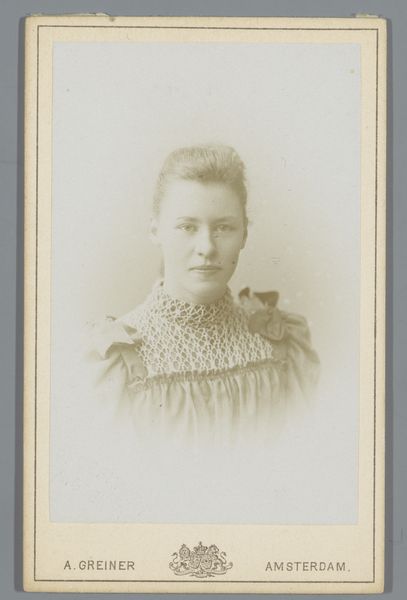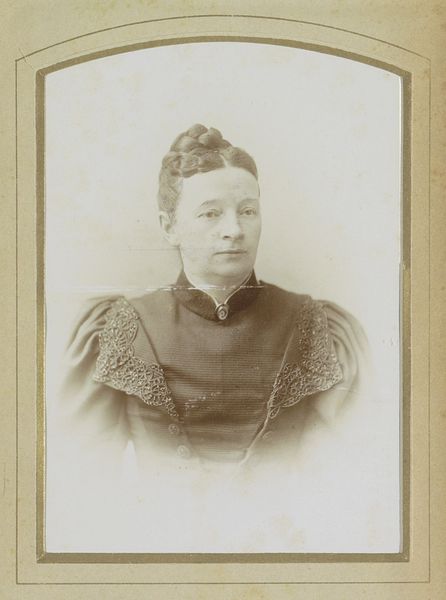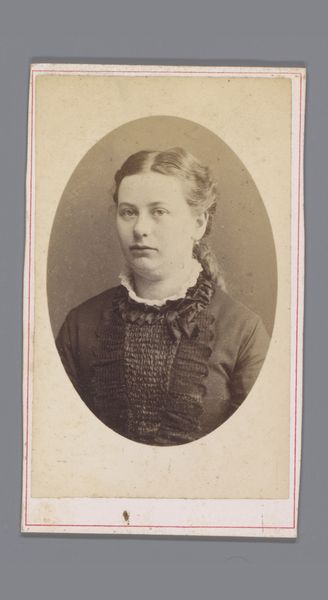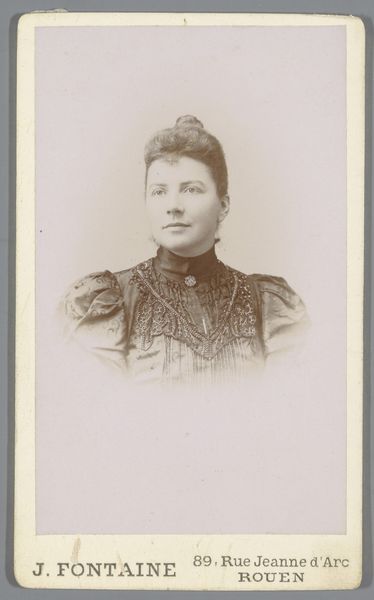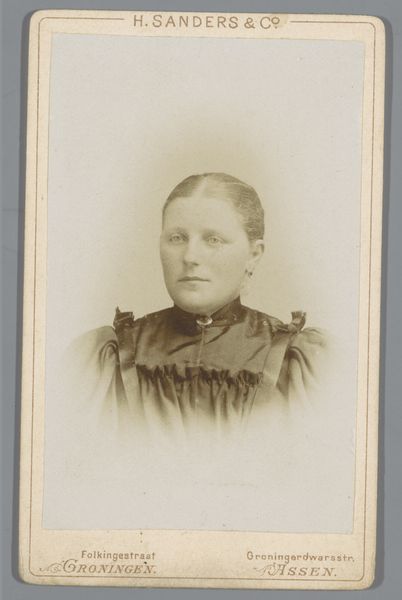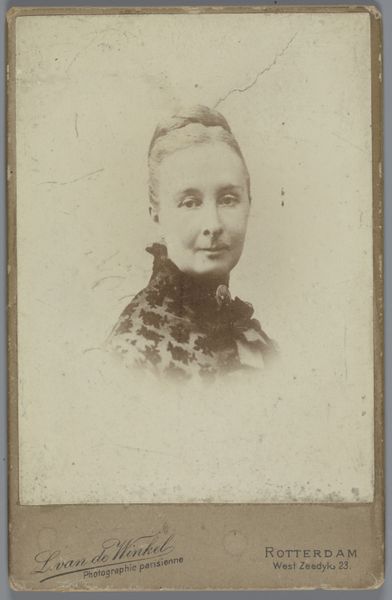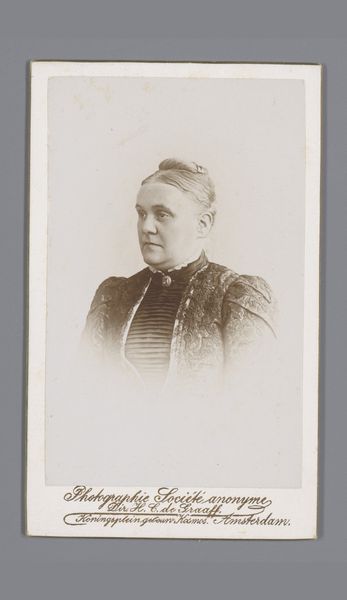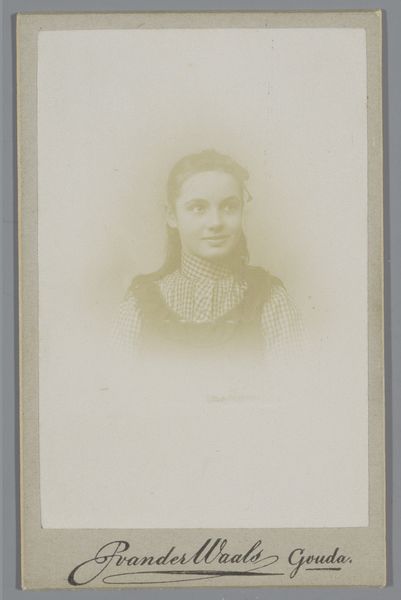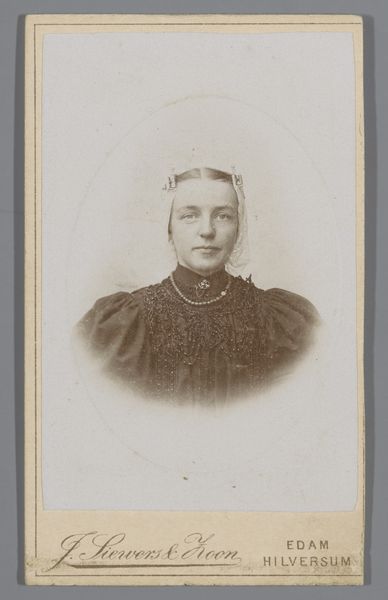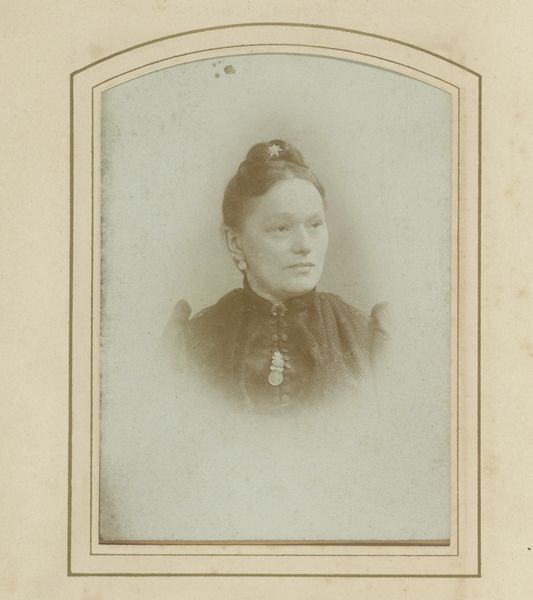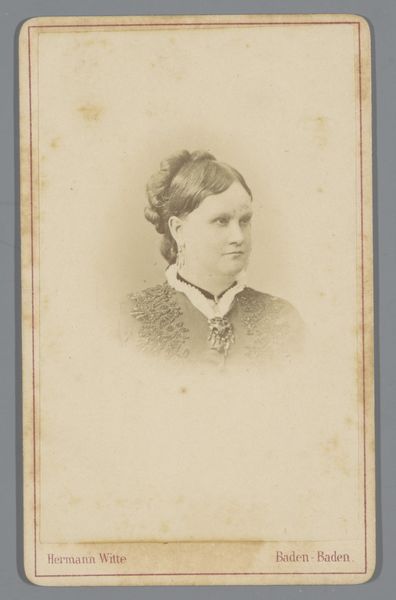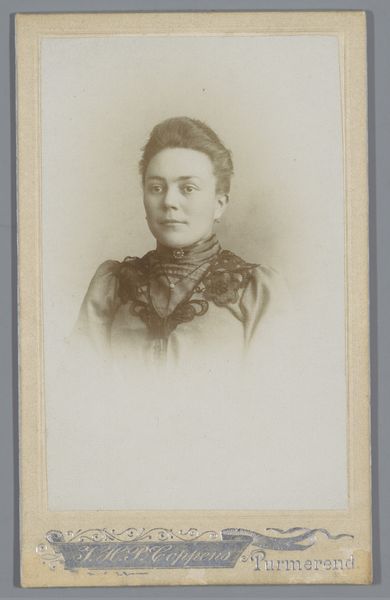
photography
#
portrait
#
photography
Dimensions: height 104 mm, width 64 mm
Copyright: Rijks Museum: Open Domain
Curator: A slightly unsettling calm emanates from this portrait, don’t you think? Editor: I'd say unsettling is right. She’s contained, perhaps even stoic, but definitely reserved. This studio portrait, "Portret van een onbekende vrouw" made around 1897 by Jacobus Cornelis Kuijper, really conveys the social conventions of that era. Curator: Conventions, absolutely. Photography was quite new at the time, right? The gravity here makes me think about notions of visibility, representation and class, the burden of existing within the societal eye. Editor: Indeed. Think of the process too; glass plate negatives, specific chemical developers—these early photographic technologies dictated lengthy exposures. The woman would have had to remain very still, furthering that impression of controlled reserve. It also had implications for who got photographed; not everyone had the time or money for a portrait sitting. Curator: Yes! It is as though her likeness has become a type, rendered through light and chemicals into the ideal matronly icon for late 19th-century society. That carefully ruffled collar seems almost armor-like, protecting an untold story. Editor: And that brings me back to the materiality of it all—this isn't just capturing an image, but crafting an artifact, an item produced through industrial processes in a specific historical moment. Look closely, and the sepia toning speaks to particular tastes. The portrait might even have been subtly hand-painted afterwards to enhance its value, making this a hybrid between industrial reproduction and skilled craft. Curator: I am always amazed at the symbolic implications in seemingly mundane pieces. Perhaps her anonymity reinforces a commonality, suggesting that every woman, no matter her individual struggles or triumphs, ultimately exists as a pillar of that time. Editor: Or, to turn that around, the relentless, repetitive production of similar images both celebrates and somewhat effaces individuality under industrial society, doesn’t it? These objects were traded, given as mementos. A photographic industry helped structure, disseminate, and solidify a certain vision. Curator: Very true! Each viewing provides additional social insight. I feel the threads of psychological impact are all interwoven within. Editor: Precisely, a simple photographic material opens an unexpected window into late 19th-century realities.
Comments
No comments
Be the first to comment and join the conversation on the ultimate creative platform.
